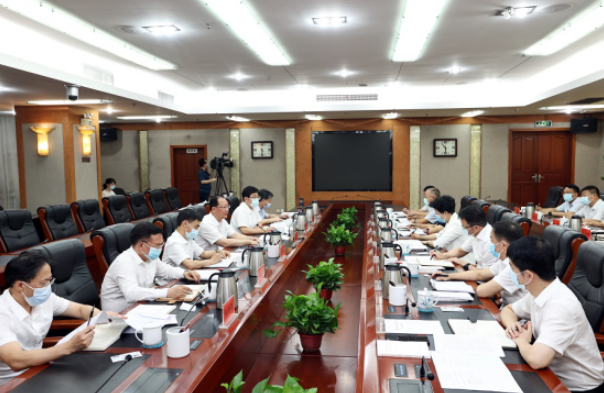The theme of China's cultural and tourist industry through 2023 was revival. According to data from the National Bureau of Statistics, in the first three quarters of the year, the total revenue of China's cultural enterprises was 9.16 trillion yuan (1.29 trillion U.S. dollars), up 7.7 percent year on year. With favorable policies, the support of scientific technology and the transformation of tourism concepts, innovation has been and will remain a key driving force behind the revival of the cultural and tourist industry. FULL HEAD OF STEAM Enterprises in the 16 prominent new subcategories listed by the Ministry of Culture and Tourism (MCT), such as digital publication, digital cultural content service and the manufacture of smart devices related to cultural consumption, saw their revenue rise by 15.2 percent year on year. The rise of the new subcategories has been tangible. According to the ministry, about 900,000 items and sets of cultural relics at the Palace Museum have undergone digitalization, constituting 48 percent of its total collections. Meanwhile, of the 1.43 million sets of collections at the National Museum of China, 700,000 have been digitally processed. In June, an 11-part series of standards for digital protection of intangible cultural heritage was released by the MCT, elaborating on the specific requirements for the digitalization of different types of intangible cultural heritage items. Promoting the digitalization of such resources lays a solid foundation for better utilizing and presenting them, said Lu Yingchuan, vice minister of culture and tourism. In September, a guideline was issued by the State Council on unleashing the potential of tourist expenditure, listing a number of measures to deepen the integration of culture and tourism. It was estimated by the China Tourism Academy that the total tourism income in 2023 across the country will bounce back to 5.2 trillion yuan, 91 percent of the figure from 2019. STRONG SCI-TECH SUPPORT "We didn't expect such strong interest from the visitors in observing the restoration of relics up close," said Lei Yu, curator of the popular Sanxingdui Museum in southwest China's Sichuan Province. He was referring to the hall showing the restoration of cultural relics. Despite freezing weather, the venue remained a hot spot for visitors. Inside a hall of the museum, there was a glass wall separating the cultural conservation work area from the sightseeing area. On one side, researchers engaged in restoring the relics with state-of-the-art devices. On the other side, visitors watched the restoration work, either directly or via 3D replays, and learned about the restoration through touch screens, interactive games and other creative forms. At the new site of the museum, naked-eye 3D technology was utilized to "restore" the archaeological sites, allowing visitors to immerse themselves in the excitement of unearthing relics from the viewpoint of archaeologists. "While highlighting the visual impact, we try to better present the stories behind the cultural relics so that the visitors can feel the unique charm of Chinese culture while enhancing their cultural confidence," said Zhu Yarong, deputy director of the museum. Such innovative measures with cutting-edge technology have won over numerous visitors. During the eight-day National Day holiday from Sept. 29 to Oct. 6, Sanxingdui Museum welcomed 153,400 visits, more than tripling the number from the same period in 2019. According to a three-year plan to boost domestic tourism released by the MCT in mid-November, the role of scientific technology in facilitating tourism will be further enhanced, and new technologies will be more widely applied at tourist sites. "The wide application of new technologies brings new audiovisual experiences to people and creates a new business model that integrates culture and tourism," said Tao Cheng, a senior official with the MCT. CREATIVE TRANSFORMATION In northwest China's city of Xi'an, an unimpressive old shopping mall was turned into a buzzing neighborhood in the style of Chang'an, the old name for the city when it was the capital of China's Tang Dynasty (618-907). Various traditional Chinese buildings from the period featuring carved beams and painted rafters flank the streets of the block, which also stage Tang Dynasty songs, dances and interactive reenactments featuring celebrities from the era. "We feel like ordinary Chang'an residents from the height of the Tang Dynasty here," said Xi'an resident Liu Rui, who was surprised by the evolution of the site. "The sensation of traveling back in time to such lively surroundings made me realize that tourism can be so profound." Yanchi County in northwest China boasts part of the Great Wall. As night falls, the site starts glowing with different lights and colors, becoming a stage for dances that reflect the beauty of cultural interaction along the ancient Silk Road. Such transformations are in line with the aforementioned guideline on unleashing the potential of tourist expenditure, which called for flexible efforts to make the most of existing and potential tourist programs and sites with the support of financial and investment policies. For practitioners behind the scenes, the transformation of sites into cultural and tourist phenomena stems from the transformation of Chinese people's concepts. "The old way of sightseeing can no longer meet the tourists' needs for cultural and tourist activities," said Lu Tao, general manager of the company behind the ancient Chang'an city neighborhood. "Creating more tourist products that meet the needs of the people for a better life through modern means is the direction of the supply-side reform of the cultural and tourism industry."
Innovation boosts revival of China's cultural, tourist industry
Editor:谭婕倪
Source:Xinhua
Updated:2023-12-28 17:07:05
Source:Xinhua
Updated:2023-12-28 17:07:05
Special
Contact
Welcome to English Channel! Any suggestion, welcome.Tel:0731-82965627
lisl@rednet.cn
zhouqian@rednet.cn











